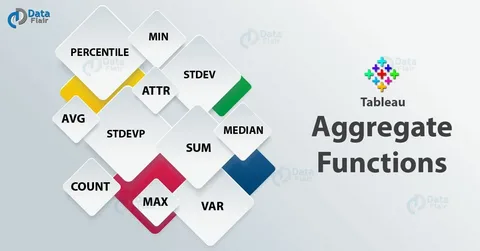Introduction
In the realm of data analytics, deriving meaningful insights from vast datasets requires more than simple observation. Analysts need methods to summarise, group, and distil data into actionable intelligence. One of the most powerful techniques in this process is data aggregation, which allows the consolidation of data points into coherent summaries. Among the many tools available for aggregation, the GroupBy function stands out for its versatility and efficiency. For learners enrolled in a data scientist course in Bangalore, mastering GroupBy is essential for performing sophisticated data transformations, understanding trends, and preparing datasets for deeper analytics.
Why Data Aggregation is Crucial
Modern datasets are often large, multi-dimensional, and detailed. Without aggregation, patterns may remain hidden in the sheer volume of data. Data aggregation provides several advantages:
-
Simplification: Reduces the complexity of datasets, making them easier to interpret.
-
Trend Identification: Highlights recurring patterns and key metrics over specific dimensions.
-
Decision Support: Summarised data provides executives with actionable insights for strategy formulation.
-
Efficiency: Streamlines computation by focusing on essential metrics instead of analysing every single record.
For those pursuing a data scientist course in Bangalore, understanding how to aggregate data effectively is fundamental to bridging raw data and strategic decision-making.
Understanding the GroupBy Function
The GroupBy function is a method that divides a dataset into subsets based on the values of one or more keys and allows the application of aggregation operations on each subset. Its conceptual simplicity hides a powerful ability to summarise complex datasets across multiple dimensions. Key operations enabled by GroupBy include:
-
Summarisation: Calculating metrics like sums, means, medians, and counts within each group.
-
Transformation: Modifying groups while preserving the structure of the dataset.
-
Filtering: Selecting groups based on specific criteria for further analysis.
This functionality makes GroupBy indispensable for analysts handling large, multi-faceted datasets.
Steps to Aggregate Data Using GroupBy
1. Identifying Grouping Variables
The initial step is to determine which variables will serve as the basis for grouping. These could be categorical fields such as product type, region, department, or any variable of analytical interest. Proper selection ensures that the aggregation yields meaningful insights rather than arbitrary summaries.
2. Applying Aggregation Functions
After grouping, various aggregation functions can be applied to compute summary statistics for each group. Common aggregation metrics include:
-
Count: Number of records per group.
-
Sum: Total value within each group.
-
Mean/Median: Average or middle value to assess central tendency.
-
Minimum/Maximum: Extremes within the group to understand variability.
-
Custom Aggregations: Using multiple functions simultaneously or defining domain-specific calculations.
These functions provide both high-level summaries and detailed statistical insights, crucial for decision-making and reporting.
3. Combining Multiple Aggregations
GroupBy allows the simultaneous application of multiple aggregation functions. For example, while grouping sales data by region, analysts can calculate both total revenue and average order value. This multi-faceted approach ensures that datasets are analysed holistically, capturing more dimensions of performance.
4. Resetting Index and Formatting Results
Post-aggregation, the resulting data often needs restructuring for readability or compatibility with visualisation tools. Resetting indices, renaming columns, and sorting groups are common practices that facilitate downstream analysis. Cleanly formatted aggregated data supports reporting, dashboarding, and predictive modelling.
Practical Applications of GroupBy
The versatility of GroupBy extends across multiple industries and analytical contexts:
-
Business Analytics: Grouping sales by product category, region, or time period to identify high-performing segments.
-
Financial Analysis: Summarising transactions by account type, customer, or date to monitor risk and performance.
-
Healthcare Analytics: Aggregating patient records by demographic groups to observe trends in treatment outcomes.
-
Operations: Summarising production metrics across plants or shifts to evaluate efficiency.
By mastering GroupBy, professionals enrolled in a data scientist course in Bangalore can extract valuable insights from diverse datasets and support evidence-based decision-making across sectors.
Best Practices for Using GroupBy
-
Understand the Data: Before grouping, explore the dataset to identify missing values, inconsistencies, or anomalies that could distort aggregation.
-
Choose Aggregation Functions Wisely: Apply functions that reflect the analytical goals, whether summarising totals, averages, or categorical distributions.
-
Avoid Over-Aggregation: Excessive summarisation can obscure important nuances, so strike a balance between simplicity and detail.
-
Document Processes: Maintaining clear records of grouping and aggregation steps ensures reproducibility and transparency.
Following these practices ensures that aggregation produces accurate, insightful, and actionable results.
Advanced GroupBy Techniques
For learners aiming to go beyond basic aggregation, several advanced techniques exist:
-
Multi-Level Grouping: Grouping by multiple variables simultaneously to analyse interactions, such as region and product type together.
-
Pivot Tables: Creating pivot tables from grouped data provides an intuitive summary in tabular form.
-
Time-Based Grouping: Aggregating data by temporal units like days, months, or quarters to uncover trends over time.
-
Custom Functions: Implementing domain-specific functions for unique analytical requirements.
These advanced methods enable deeper insights, particularly in large and complex datasets typical in real-world scenarios.
Conclusion
Data aggregation is a cornerstone of effective analytics. By summarising data through the GroupBy function, analysts can transform raw datasets into concise, interpretable, and actionable insights. Mastering GroupBy equips professionals with the skills to handle large-scale datasets, uncover patterns, and support data-driven decision-making.
For those pursuing a data scientist course in Bangalore, gaining proficiency in GroupBy not only enhances technical competence but also prepares them to tackle diverse analytical challenges across industries. With structured aggregation, analysts can provide clearer insights, guide strategic decisions, and ensure that data becomes a true asset rather than a burden.
The ability to summarise, reshape, and interpret data through aggregation is foundational to modern data science workflows. It bridges the gap between raw information and business intelligence, enabling analysts to unlock the full potential of the datasets they work with. Ultimately, GroupBy is not just a function—it is a tool for turning complexity into clarity and delivering value from data consistently.


